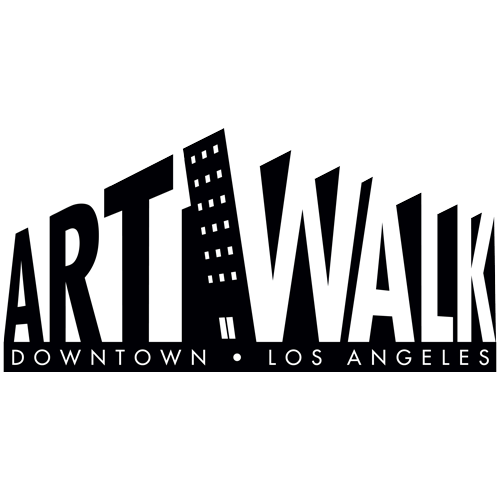Chicano artist Gronk (né Glugio Nicandro) may have earned a reputation as mercurial, but he has also gained legendary status with his prolific practice as painter, theatrical set designer, performance artist, muralist, art collective co-founder, art activist, provocateur, and more. Fame, however, has never been his goal. “Many artists emulate what is popular and want to be recognized as the art stars they read about,” he says. “To me, it’s always been about just the practice of doing something, making something with my hands, with my mind, and creating something on a daily basis.”
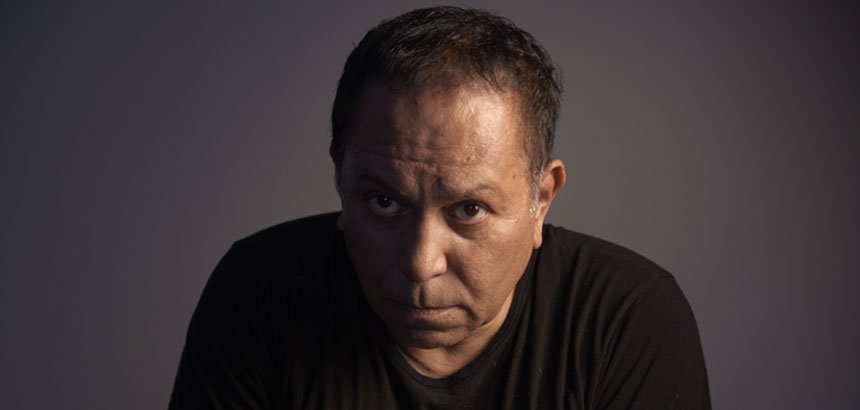
Discipline has been core to his art practice. Like his daily drawings, which he creates in a coffee shop near his large studio located in the heart of Downtown Los Angeles’ Historic Core, which he’s called home for 30 years. The idea for the drawings first emerged eight years ago. “Since I live and work in one space, I like to go out and have a cup of coffee. With the coffee came the idea of doing a drawing and recording it every single day.” Sitting in a quiet corner with one little watercolor box and a pen, he has created thousands of these small works.
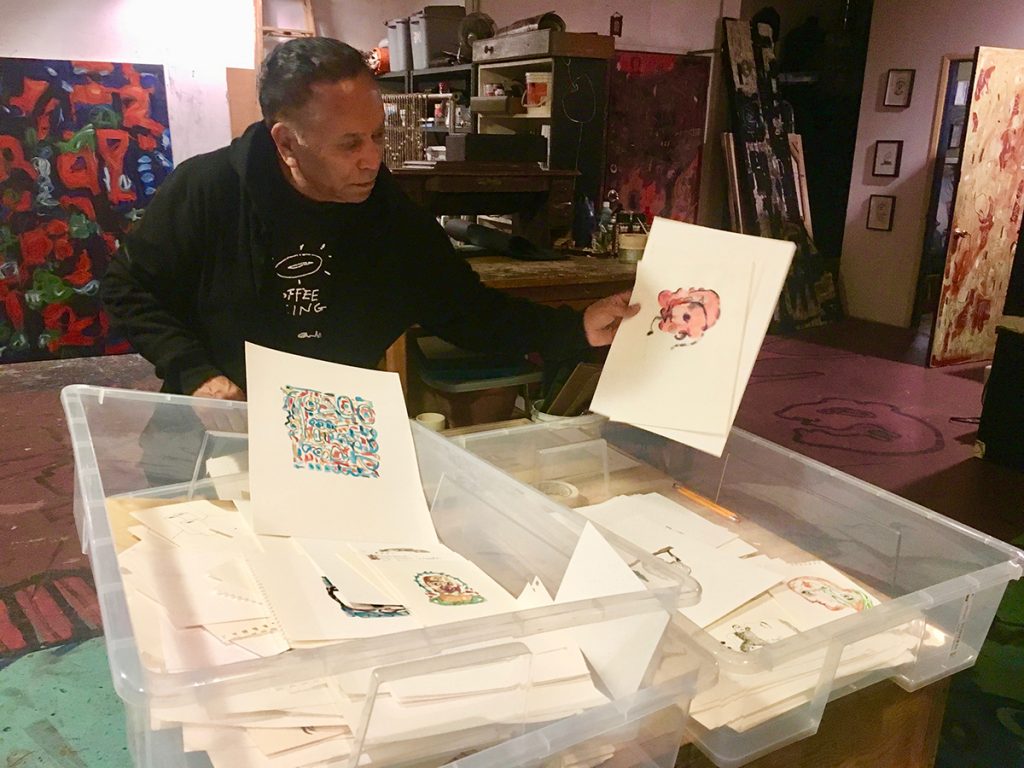
And while the drawings can be purchased during his trimonthly open studio, his motive is equally educational. “For the students who come to my open studio, I want to communicate that art-making does not have to be expensive. That I use only a few materials but can create many works.” He adds, “I also want to communicate to visitors that art-making is a discipline. You actually have to practice it and continue to do so. It’s like being a concert pianist. You can’t just go out on stage and wing it. There are lots and lots of rehearsals beforehand. For me, painting and art-making is a kind of a ritual.”
His daily drawings are leading him to create larger pieces and full-blown bodies of work. One example is his iconic muse, La Tormenta (storm in Spanish). Her imagery first came to him in 1985 when sketching a circle and triangle encased in a square. “These are the building blocks of design,” he explains. Later, the circle became her head and the triangle the ‘V’ in her long black dress. Inspiration came from John Singer Sargent’s Madame X and Ingrid Bergman’s dress in Alfred Hitchcock’s Notorious. “I wanted to make a mythological character, like the Greek Medusa, Medea, and Elektra.”
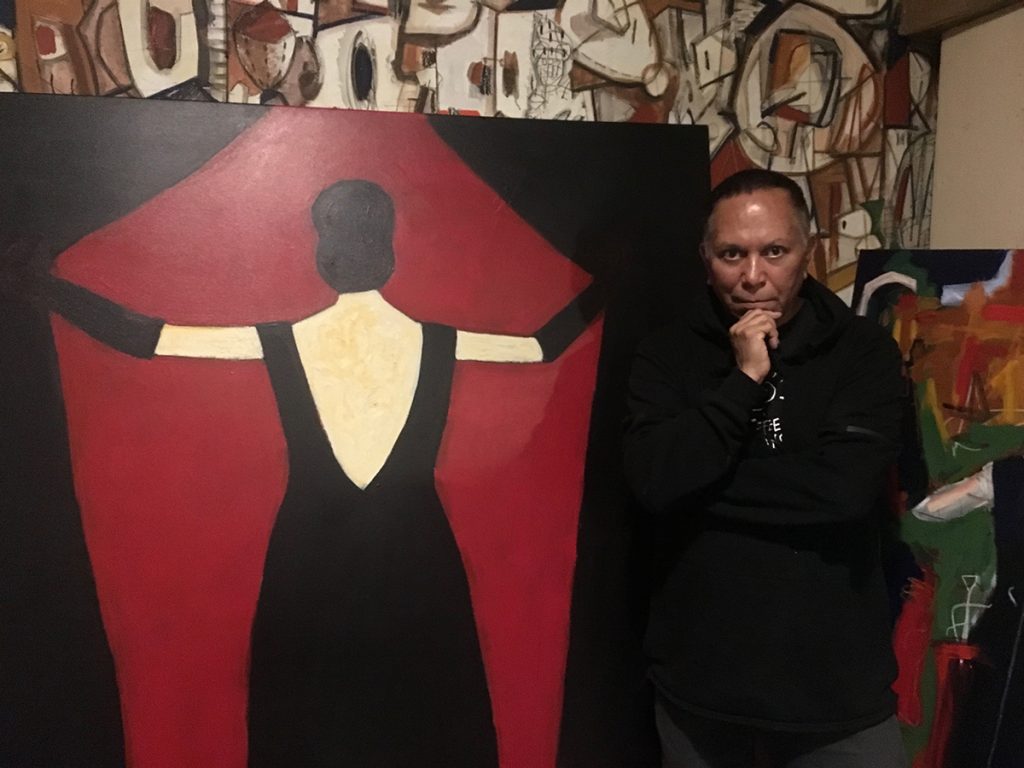
Gronk created a woman who is strong, glamorous, and dominates her environment — with her back facing the viewer. An alter ego, perhaps? He admits it’s a common question, and quickly adds, “I think many women had an impact on me,” citing his mother, a local librarian who encouraged his love of reading, and his middle school ceramics teacher who was intrigued by his precocious behavior. “She asked me why I was making African-like masks in class. So, I told her I was burying them all over East L.A. because in the future I want an archeologist to find them and wonder how they got there. She told me ‘you’re going to have to take an awful lot of criticism from people, but don’t listen to them. Continue to do what you’re doing.’”

La Tormenta’s image can be seen throughout Gronk’s studio in large and small paintings; drawings; the pattern in a new cloth material he’s developing; and a small-scale model of a theatrical set design. Gronk recalls his 1997 Tormenta collaboration with composer Joseph Julian Gonzales when he painted her image live on stage. Using an amplified paintbrush, his brushstrokes followed the musical score along with strings and vocals. “I think there’s a musicality to my work. I deal with shapes and forms and repeated patterns.”
His large-scale, hand-painted opera set designs for famed director Peter Sellers have been an ongoing collaboration since 1998. Researching the history behind each production is rooted in his passion for reading and learning. “Reading was the big thing for me as a child, and still is. So, when someone like director Peter Sellers asks if I’d like to do an opera, I know it will take two years out of my life because there’s almost a year and a half of research that is involved,” he explains. “There may be a time frame that I don’t know much about, so I’m all of a sudden in England in the 1600s and there’s the great fire of London, and the plague going on so it’s all just fascinating.” He adds, “Women didn’t actually record history. It was always written by men, so I try to find what women had to say about world events that were taking place during their time. All of a sudden it just opens up a lot of things.”


Left, opera stage set design by Gronk for Ainadamar (The Fountain of Tears) directed by Peter Sellers, 2005. Photo by Lucy Birmingham. Right, Ainadamar live performance, 2005. Photo courtesy of Gronk.
Humor and irony visibly seep into his work. “The research is not always serious. I mix in B movie themes as well, throwing that monkey wrench into the pot.” Embodying this is a three-pronged claw sculpture standing near his entryway. “I made it based on a movie from the 1950s called The Giant Claw. It was a disaster when it opened, so I’m giving it here the red-carpet treatment. For me, it’s about finding things that most people would disregard and find unimportant. Those are things I latch onto.”
The building where he lives and works proves a case in point – an aged, former post office with an uninviting entryway, but Gronk saw an opportunity. “There were these blank walls in the lobby, so about nine years ago I started putting up my artworks. People seemed interested in it. And then one day a group with the [Downtown Los Angeles] Art Walk came in to see the space. It’s now open during the Art Walk and when the exhibiting artist wants to give a tour of their show. So, it’s grown organically.” Now called the Lobby Gallery, Gronk is the unofficial manager. “It’s booked almost a year in advance,” he explains. “There are no rules. We’ve had people from eight years old to 70 using the space for performances, poetry readings, music, art. In one of the exhibitions, photographer Gary Nellis activated the Lobby Gallery into a temporary photo studio space. And we don’t charge a user fee.”
Gronk’s experience running a nonprofit gallery began in 1978 when he and several dedicated artist friends founded LACE (Los Angeles Contemporary Exhibitions) with government backing. “The city gave us funding to open a gallery space where we curated and assembled shows. We invited artists from different places to participate.” Originally in Downtown at 240 S. Broadway, LACE relocated to Hollywood in 1993 and continues today with its mission to foster “artists who innovate, explore, and risk.”
Gronk is no stranger to risk. In the early 1970s, he cofounded ASCO (nausea in Spanish), a multimedia art collective set on challenging the lack of representation of Chicano art in museums and the media. During one protest in 1972 he and ASCO members spray-painted their names on the entrance of the Los Angeles County Museum of Art. At the time, the doors were virtually closed to Chicano artists whose works were dismissed as “graffiti.” Finally, in 2011, LACMA held an ASCO retrospective (1972-1987). It was a first for the art group.
Murals more than graffiti have been a significant part of his practice. “I’ve done large-scale installations inside of museums and universities, and a piece almost the size of a football field at MOCA,” he says. “But the murals remain for only a short time until the exhibition is over. Then they get completely white-washed, and the wall is back to being blank again.” He adds, “The thing is, it has an ephemeral nature. It’s not intended to last. It’s like Tibetan monks doing a mandala. It’s not there forever. The ritual’s there – you put all of your sensibilities into creating something. But like life itself, it doesn’t last forever.”
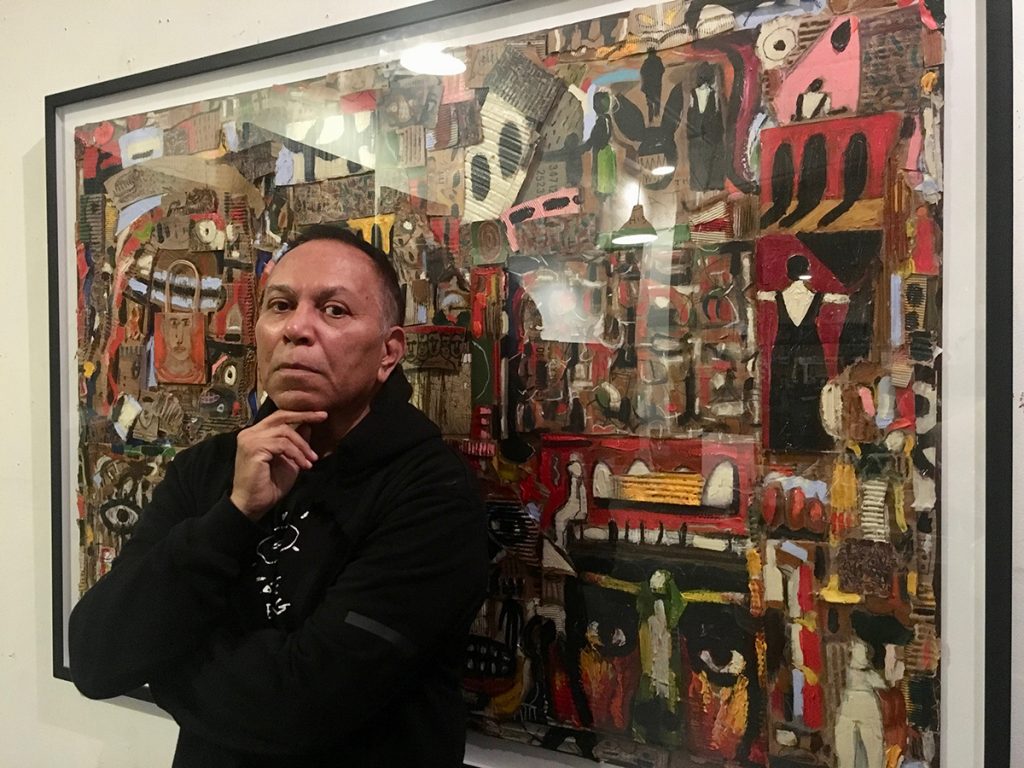
The mural process can require extreme strength, both mental and physical. He recalls a massive mural he created at a museum in Madison, Wisconsin that had to be finished in two weeks. “So, I go in and prepare for the piece, not with pre-sketches or anything, but with a definitive notion that his has to be done in a quick amount of time,” he explains. “One day, during a tour of elementary school kids, one kid raised his hand and asked me, ‘Was there any moment that you had doubt?’ And I thought, well no, I can’t have doubt because I feel like I’m a boxer in an arena. If you think about it too much, you’re going to get knocked out before you even begin to fight. That’s also what it is for me in painting. Even if it’s large scale, you go in and you take control.”
He emphasizes that his work is about ideas. “For me, that’s the important part of being an artist. The more ideas you intake, the more you’re able to give back. That’s what I try to instill in younger artists.” He adds, “I want to be fed with all kinds of new things, ideas, and take a look at the world around me. This, and to appreciate the daily, the moment, because things are always in flux. Always changing.”
+++++++++++++++++++
Written by: Lucy Birmingham
Featured image by: Rush Varela
All other images by Lucy Birmingham, unless otherwise credited.
Gronk on Facebook: Facebook.com/gronk.nicandro
Instagram: @elgronk
Lobby Gallery: Facebook.com/TheLobbyGallery
LACE: welcometolace.org
